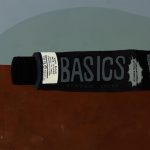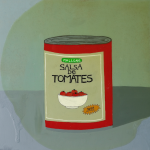The ecopolitics beneath the world’s hottest conflict.
From Adbusters #113: Blueprint for a New World, Part 2: Eco

PETER HOWARD
I was 21 years old when I first saw a drought with my own eyes. It’s the saddest thing that I have ever seen.
We were driving deep into Mashonaland, from Harare to Chegutu. With my head pressed against the window of the minivan I could see field after field of once lush corn stalks cracking in the heat.
In a country like Canada, where I was born, there’s enough surplus wealth, credit and religious fundamentalists with canned goods in their cellars to last a generation without a crop. Not in Zimbabwe. When crops die, people die. And when people die, governments get tested, often shaken to the ground.
Seven years after its worst drought in recorded history, the Mugabe regime took a stark authoritarian turn. True, his party, the Zanu-PF, had always shown a penchant for brutality and violence, but the 2000 Land Programme was just the beginning of a new level of terror. When the hungry masses
who had migrated to the cities became a movement, they delivered the government its first ever electoral loss since the revolution.
President Mugabe responded swiftly. Using youth militias and war veterans, he pitted one half of the poor against the other in order to protect his government. The ensuing chaos and violence drove the economy to a halt and transformed Southern Africa’s bread basket into a killing field. This pattern of eco collapse underpinning political implosion can be found behind conflicts everywhere.
Spurred on by Russia’s worst drought in a century, and America’s burgeoning thirst for biofuel, wheat costs around the world doubled in 2010. In places like Tunisia and Egypt, the cost put survival nearly out of reach. Then the revolutions started. On the heels of the Arab Spring, ongoing conflicts in Mali, Libya, Western Sahara, Niger, Burkina Faso and the Sudans all revolve around a similar force: water. And it doesn’t stop there.
A recent report by the New England Complex Systems Institute highlights the eco roots of more than a dozen conflicts in countries such as the Ukraine, Thailand, Bosnia, Brazil and Venezuela.
Source





















































